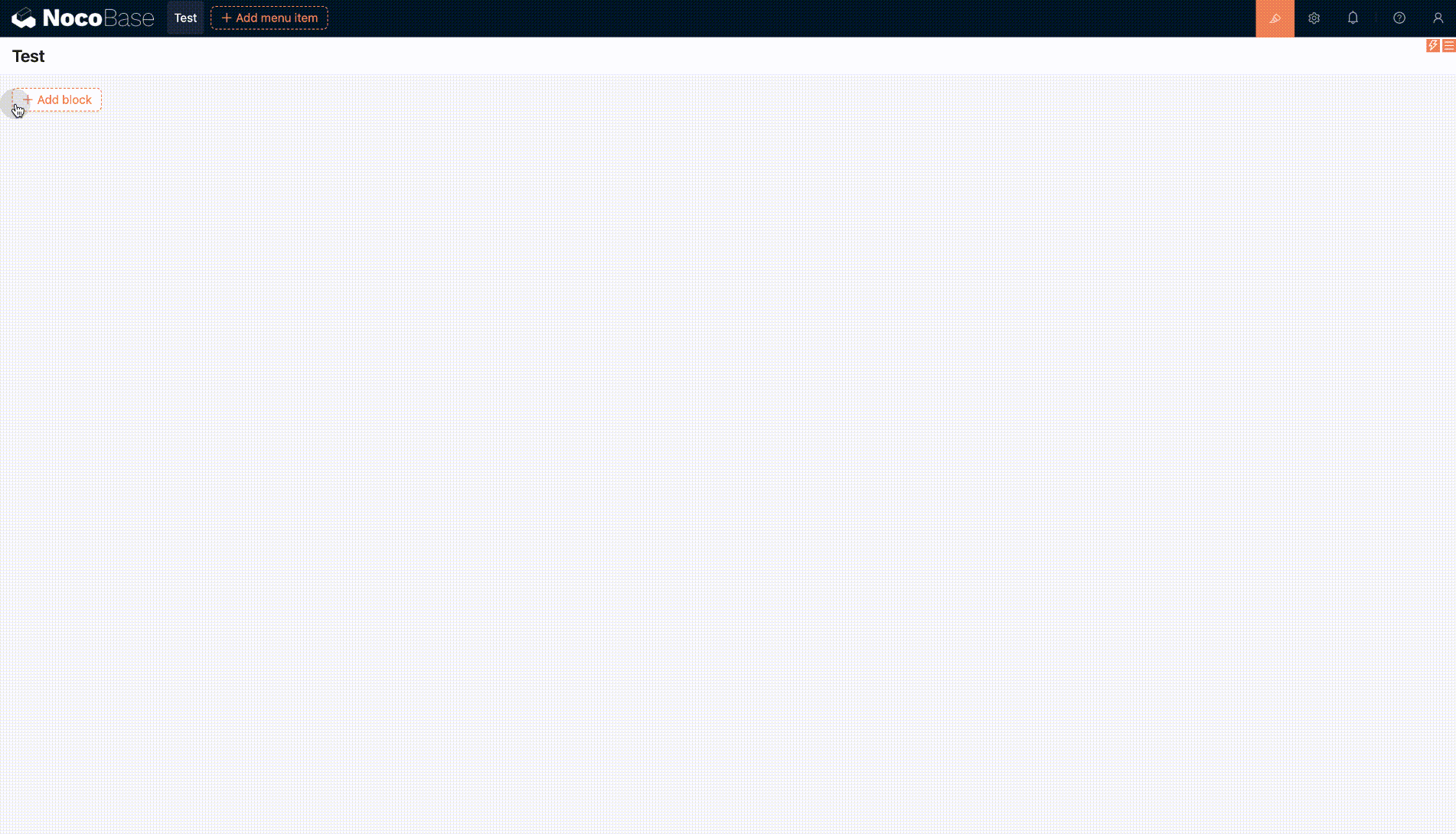Write Your First Block Plugin
Before starting, it's recommended to read "Write Your First Plugin" to learn how to quickly create a basic plugin. Next, we'll extend it by adding a simple Block feature.
Step 1: Create Block Model File
Create a new file in the plugin directory: client/models/SimpleBlockModel.tsx
Step 2: Write Model Content
Define and implement a basic block model in the file, including its rendering logic:
import { BlockModel } from '@nocobase/client';
import React from 'react';
import { tExpr } from '../utils';
export class SimpleBlockModel extends BlockModel {
renderComponent() {
return (
<div>
<h1>Hello, NocoBase!</h1>
<p>This is a simple block rendered by SimpleBlockModel.</p>
</div>
);
}
}
SimpleBlockModel.define({
label: tExpr('Hello block'),
});
Step 3: Register Block Model
Export the newly created model in the client/models/index.ts file:
import { ModelConstructor } from '@nocobase/flow-engine';
import { SimpleBlockModel } from './SimpleBlockModel';
export default {
SimpleBlockModel,
} as Record<string, ModelConstructor>;
Step 4: Activate and Experience the Block
After enabling the plugin, you'll see the new Hello block option in the "Add Block" dropdown menu.
Demo effect:

Step 5: Add Configuration Capability to Block
Next, we'll add configurable functionality to the block through Flow, enabling users to edit block content in the interface.
Continue editing the SimpleBlockModel.tsx file:
import { BlockModel } from '@nocobase/client';
import React from 'react';
import { tExpr } from '../locale';
export class SimpleBlockModel extends BlockModel {
renderComponent() {
return <div dangerouslySetInnerHTML={{ __html: this.props.html }} />;
}
}
SimpleBlockModel.define({
label: tExpr('Simple block'),
});
SimpleBlockModel.registerFlow({
key: 'flow1',
title: tExpr('Simple Block Flow'),
on: 'beforeRender',
steps: {
editHtml: {
title: tExpr('Edit HTML Content'),
uiSchema: {
html: {
type: 'string',
title: tExpr('HTML Content'),
'x-decorator': 'FormItem',
'x-component': 'Input.TextArea',
},
},
defaultParams: {
html: `<h3>This is a simple block</h3>
<p>You can edit the HTML content.</p>`,
},
handler(ctx, params) {
ctx.model.props.html = params.html;
},
},
},
});
Demo effect:

Summary
This article introduces how to create a simple block plugin, including:
- How to define and implement a block model
- How to register a block model
- How to add configurable functionality through Flow
Complete source code reference: Simple Block Example



